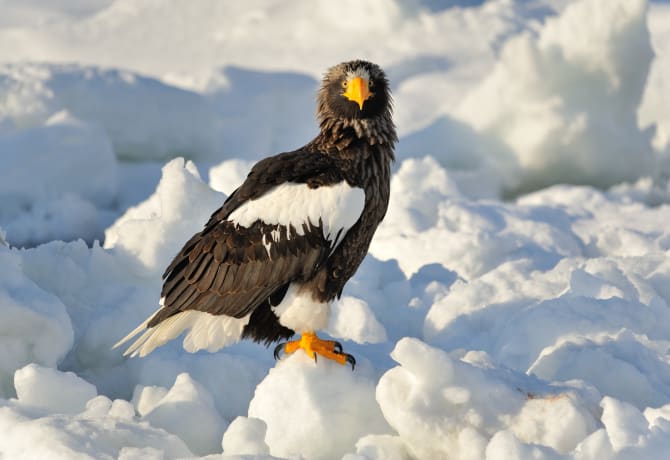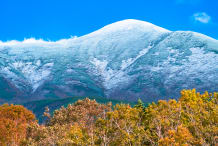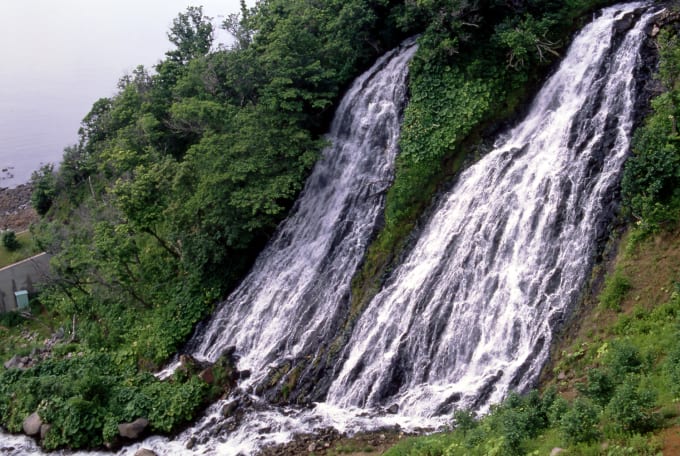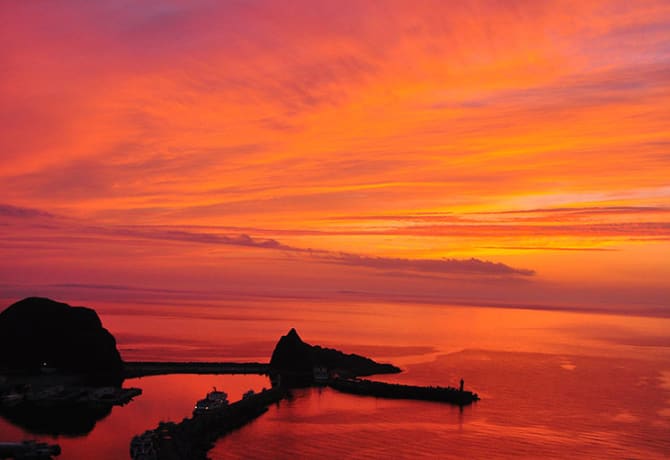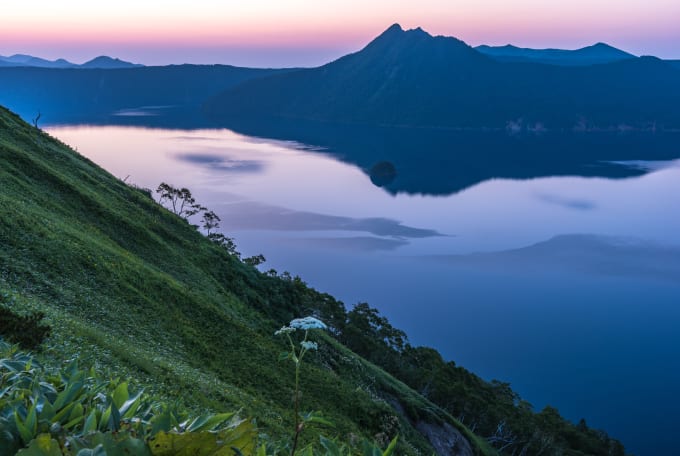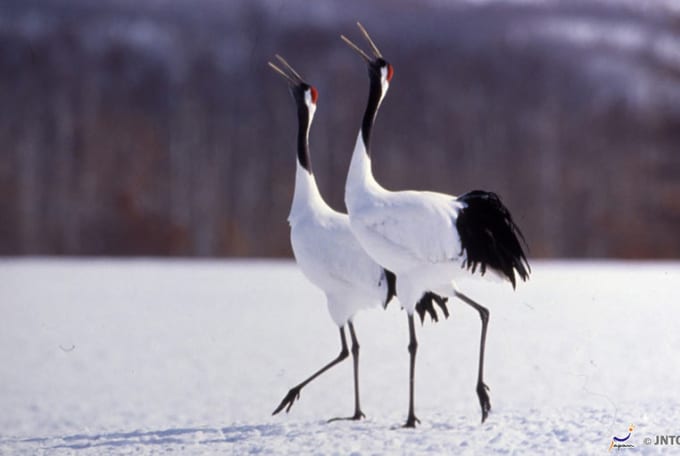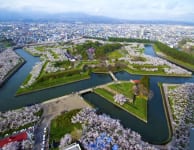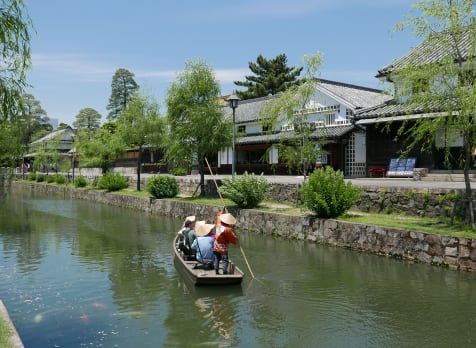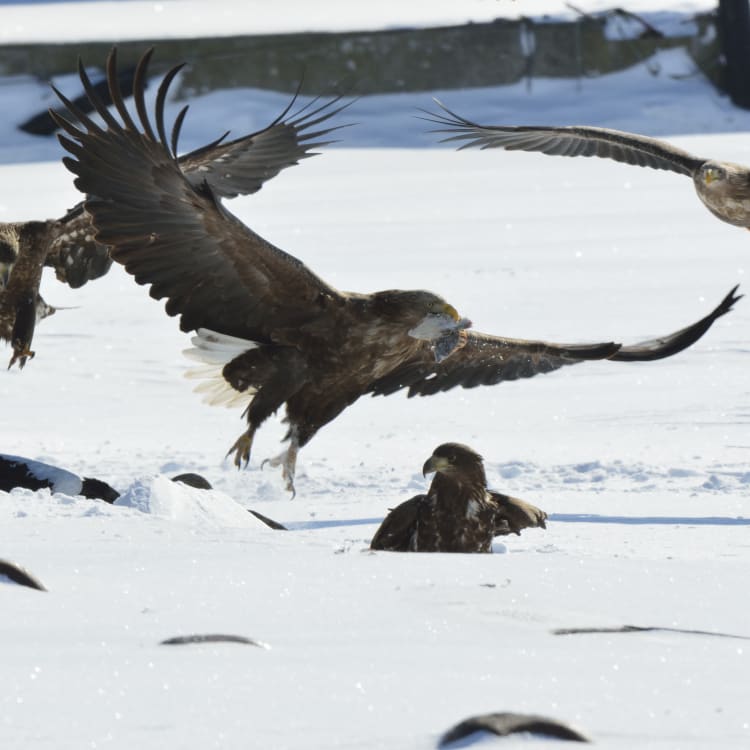

ITINERARIES Hokkaido's Great Outdoors Natural beauty and ancient history come together as you explore Japan's northernmost island
Enjoy some of the most pristine wilderness in Japan, hot springs, and rare animals at UNESCO World Heritage-designated Shiretoko
Highlights
- Sunset and fresh local uni (sea urchin) in Utoro
- The views of Lake Akan from one of the hot springs at a hotel
- Kushiro Marsh—the largest such area in Japan
The Shiretoko Peninsula juts out into the Okhotsk Sea east of Hokkaido. It's home to a wide range of plant and animal life, including brown bears, Yezo Sika deer, rare birds, and beautiful flowers. The site was designated a Natural World Heritage site in 2005.
Running from late April to late October, sightseeing boats let you savor views of steep seaside cliffs, strangely shaped caves, and waterfalls pouring into the ocean as you cruise along the coast.
25 minutes
Experience nature by trekking around the Five Lakes area. These five beautiful lakes are surrounded by virgin forests. It takes about one hour to hike around the lakes, although there is also a shorter course available. Note that from May through July the longer hikes around the lake are only available by joining a group with a licensed guide. It's highly recommended to book ahead of time through the park website.
40 minutes
As you head toward the town of Utoro, visit the Oshinkoshin Waterfall. At around 70 meters tall, it's nicknamed the "twin beauties waterfall" as it splits into two distinct falls. Climb to the observation deck and enjoy sweeping views of the Okhotsk Sea and Shiretoko Mountain Range.
20 minutes
Get back to Utoro before sunset and prepare for a treat. In spring through autumn, take in the beautiful, deep orange hue as the sun passes under the horizon. In winter, the color changes to a golden yellow. End your day with some fresh local salmon or sea urchin at a nearby restaurant.
2 hours
Lake Mashu was formed after Mt. Mashu erupted. Staying at the same water level all year, this crystal clear lake is sometimes covered with a fine mist. Take in the mystical views from one of the vantage points on the trail from the lake to the mountaintop. It is rare to see the actual lake surface.
90 minutes
Formed in a caldera, Lake Akan is home to a variety of freshwater fish such as sockeye salmon, Japanese smelt, and carp. You can fish for much of the year or enjoy ice skating and snowmobiling in the winter. From early February to mid-March, there are fireworks displays on the ice and you can expect a crowd out at night.

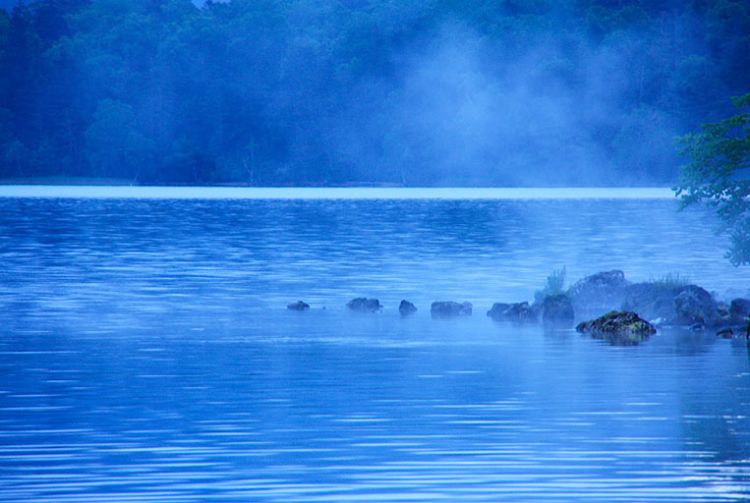
1 hour
Travel from Lake Akan to Kushiro City Tanchozuru Nature Park near Tancho Kushiro airport. Established to protect the endangered red-crowned cranes, about 20 birds roam freely in the park. Established to protect the endangered cranes, about 20 birds roam freely in the park. In May and June, you may spot them with their chicks.
30 minutes
Kushiro Marshland National Park, which includes Kushiro Marshland, covers a total area of 220.7 square kilometers and is home to over 2,000 species of plants and animals. Spot Hokkaido deer, white-tailed sea eagles, wild flowers, and even red-crowned cranes in the winter.
If hiking in the cold isn't your style, try taking a steam train. From January to March, you can take this charming steam train between Kushiro Station and Shibecha Station on the Senmo Line. This trip will take you about an hour and 30 minutes, during which you can cozy up to the coal-fired stoves in the passenger cars and enjoy the winter wonderland outside.
If you find yourself visiting in the warmer months, usually from April 29 through early October, you will find a different train running. The diesel-powered Norokko (which means slow) will take you on a leisurely ride through the marsh. Enjoy the slower pace and take in all the majestic sights through the large windows.
20 minutes
Robatayaki are grilled items over a charcoal grill or hearth are a local specialty in Kushiro. Head into the city center for a memorable dinner.
Choose a variety of fresh vegetables and locally caught seafood, and watch as they are masterfully cooked over hot coals in front of you. If you can't decide what looks best, order the omakase—chef's special set— and just sit back and enjoy.
Mt. Iozan is a fantastic and haunting reminder of the forces of nature that created the beauty you see all across Hokkaido and Japan. It's located very close to Lake Mashu. Check out the Kawayu Eco-museum Center, and from there, head up the trail to view the sulfur vents and clouds of steam.





















































